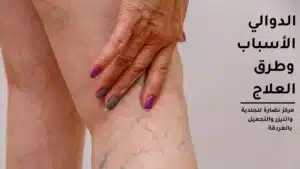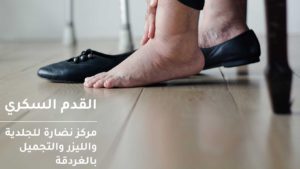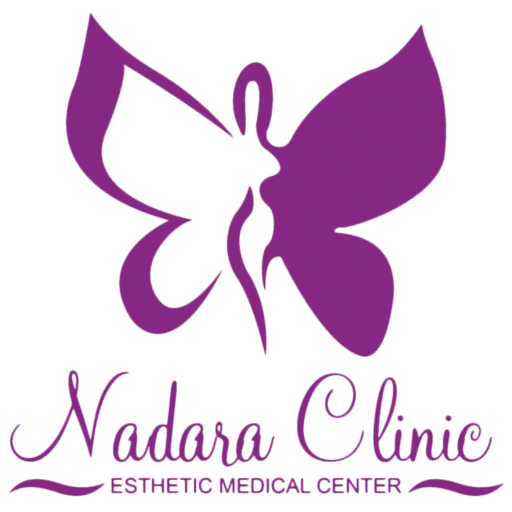Say goodbye to sagging eyelids with the surgeons at Nudara Dermatology, Cosmetic and Laser Center in Hurghada.
This condition occurs as a result of some different factors that we will learn about in this article, in addition to ways to treat it.
What is sagging eyelids?
Sagging eyelids, or ptosis, is an excessive sagging of the upper eyelid.
The edge of the upper eyelid may be too small, or there may be excess skin, and sagging is often a combination of the two.
Causes of sagging eyelids
- aging
The levator muscle lifts the eyelid. The skin and surrounding tissues stretch and become weaker with age.
This may cause your eyelids to droop slowly over time, or the skin on your eyelid as well.
- eye injury
The levator muscle can be injured or weakened, and this happens if someone or something hits you in the eye.
Wearing contact lenses for many years or rubbing the eyes a lot can also cause this.
- Eye surgery
Your eyes may droop after surgery glaucoma or LASIK.
Some people may think that the instrument that holds the eyelid back during surgery is stretching or damaging the eye muscles.
Surgery can also make the eyelid swollen, but symptoms usually improve on their own.
Talk to your surgeon at Nadara Skin, Cosmetic and Laser Center in Hurghada if you have not improved after 6 months of surgery.
- Symptoms may appear at birth
Some babies are born with one or two drooping eyelids, which happens when the muscle that holds the eyelid doesn't form properly.
- Eye infection
Sometimes conjunctivitis or a boil in the eye causes it to swell, and the eyelid will likely return to normal during recovery.
This may take 1-2 weeks or longer, but see your doctor if you have pain, pus or develop a fever.
You need antibiotics or surgery to drain fluids, and in the meantime, artificial tears or a warm or cold bruise may help your eyes feel better.
You can also read : Define and enlarge lips with fillers.
Risk factors for sagging eyelids
- myasthenia gravis (Myasthenia Gravis)
This occurs when the immune system attacks, impairing the signal between nerves and muscles.
This includes those muscles that control the eyelids, face, throat and jaw.
Ptosis may get worse at night or when you're tired.
- Horner Syndrome
It occurs when certain nerve pathways are damaged, and the affected eye has a smaller pupil.
Some benign (noncancerous) or cancerous tumors cause these symptoms, such as those in the brain or head.
Symptoms may occur if you have a migraine or a problem with the trigeminal nerve.
Your eyes can return to normal when the headaches clear up, but sometimes they can droop between attacks.
- eyelid swelling
A tumor may grow on the eyelid if you have a genetic disorder called neurofibromatosis type 1.
Doctors can recommend surgery or radiation therapy to get rid of it even though it's usually not cancerous.
- brain attack
If a blood vessel ruptures, the brain cannot get enough oxygen and nutrients, causing a stroke.
This can lead to sagging eyelids on one side of the face.
You should get help within 3 hours of your first symptoms, especially if you become numb, unable to walk, or have difficulty speaking or seeing.
You can reduce the possibility of infection by:
- Eat healthy.
- Playing sports.
- Stop smoking.
- Periodic follow-up to manage diabetes, cholesterol, and pressure.
- brain hemorrhage
A blood vessel in the brain dilates and can rupture, causing a hemorrhagic stroke.
This is an emergency situation that can cause fainting or seizure, and its symptoms appear in suffering from terrible pain in the head and brain, and changes in vision.
Numbness can also occur on one side of the body, and this condition is treated with rapid surgical intervention.
You can also read : Micro fat injection.
Other risk factors
There are some other factors that can increase your risk of developing drooping eyelids, including:
- diabetic
Over time, high blood sugar damages the blood vessels and nerves in and around the eye, and you may get double vision with drooping eyelid.
- Genetic factors
Some genetic factors can disrupt the work of Mitochondria (cells that supply the body with energy).
The eyes and eyelids weaken as a result, and cause mild vision problems in adults.
Children with these problems should always have eye exams, and their doctor may give them creatine or carnitine supplements.
- muscle problems
Sagging eyelids can be a sign of ocular or oropharyngeal muscular atrophy, but symptoms do not appear until after the age of 40.
This condition leads to problems with the tongue and throat, making it difficult to eat.
Read also: Scalp reduction surgery.
Symptoms of sagging eyelids
The drooping may be present in one or both eyelids, depending on the cause. The eyelid may cover only the upper eye, or the pupil may be completely covered.
Children with drooping eyelids may have poor vision in the upper part of the eye and tilt the head back to see better.
This condition is called lazy eye or amblyopia and may need surgical intervention to lift the eyelid.
You may also have very dry or watery eyes, and your face looks tired or tired.
Diagnosis
The surgeon at Nadara Skin, Cosmetic and Laser Center in Hurghada performs a comprehensive medical examination and asks you about your medical history.
He asks you for some tests to find the cause of the injury, and then uses a flashlight test so he can check your eyes with a high-intensity light.
Your eyes can widen for this test, so you might feel some slight discomfort.
There is another test that can be done to diagnose drooping eyelid problems called Tensilon.
The doctor injects a drug known as edrophonium to see how strong your muscles are to diagnose myasthenia gravis.
You can also read : Nose reconstruction.
Ptosis treatment
Treatment depends on the cause and severity of the condition. If it's caused by age or something you were born with, the condition may be harmless.
Some need plastic surgery if the condition affects vision, and it is called "blepharoplasty".
The surgeons at Nadara Skin, Aesthetic and Laser Center in Hurghada may recommend tightening the levator muscle, which leads to an eyelid lift.
Children can sometimes also have surgery to prevent strabismus from developing.
Eyeglasses that can elevate the eyelid — called a ptosis crutch — are another option.
This treatment is most effective when the drooping eyelid is only temporary, and is a non-surgical procedure that involves adding an attachment to your eyeglass frames.
This elbow or crutch prevents prolapse by holding the eyelid in place, and there are two types of it: adjustable or reinforced.
The adjustable type can be installed on one side of the tires, while the other (reinforced) type is on both sides of the tires.
Crutches can be fitted to almost all types of eyeglasses, but they work best with metal frames.
Can sagging eyelids be prevented?
There is no way to prevent infection, but simply knowing the symptoms and having a regular eye exam can help you fight this disorder.
If you notice that your child has this condition, take him to the doctor immediately to treat him faster so that the problem does not worsen.
In the end, if sagging eyelids harm your health and obscure vision, you should go to the specialist surgeon at Nodaa Center in Hurghada.







